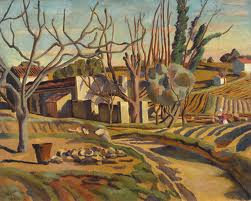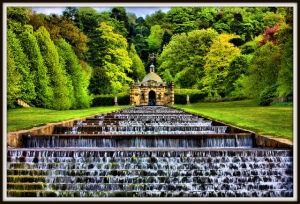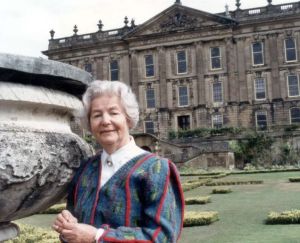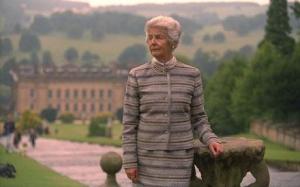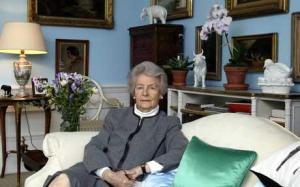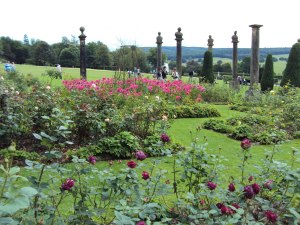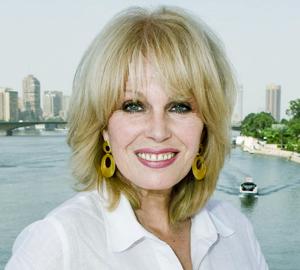





Joanna Lamond Lumley, OBE FRGS (born 1 May 1946) is an English actress, voice-over artist, former model and author, who starred in the British television series Absolutely Fabulous as Edina Monsoon’s best friend, Patsy Stone, as well as in The New Avengers, Sapphire & Steel, Jam & Jerusalem and Sensitive Skin. In film she has appeared in On Her Majesty’s Secret Service (1969), Trail of the Pink Panther (1982) and James and the Giant Peach (1996).
She later appeared in Maybe Baby (2000), Ella Enchanted (2004) and Corpse Bride (2005). She appeared alongside Leonardo DiCaprio in the Martin Scorsese crime drama, The Wolf of Wall Street (2013). She has also appeared in several stage roles and in 2011 was nominated for the Tony Award for Best Featured Actress in a Play for her performance in La Bête.
She has spoken out as a human rights activist for Survival International and the Gurkha Justice Campaign and is now considered a “national treasure” of Nepal because of her support. She is an advocate for a number of charities and animal welfare groups such as Compassion in World Farming and Vegetarians’ International Voice for Animals. She is patron of the Farm Animal Sanctuary. She also won the Special Recognition Award at The National Television Awards in 2013.
As of July 2012, she is planning, in collaboration with the designer Thomas Heatherwick, a pedestrian bridge across the Thames in London, ‘Garden Bridge’. This is planned to feature trees and gardens.
Early life
Joanna Lamond Lumley was born on 1 May 1946 in Srinagar, in the princely state of Kashmir and Jammu, which was then part of the British Raj. Her parents were Major James Rutherford-Lumley, who served in the 6th Gurkha Rifles, a regiment of the British Indian Army, and Thya Rose (Weir), who were married in 1941.
After the independence of India in 1947, the Lumleys moved to Kent, England. The family also spent time in Malaya (now Malaysia). Lumley was educated at St Mary’s Convent School in St Leonards-on-Sea, Sussex, England, and afterwards attended the Lucie Clayton Finishing School, after being turned down by the Royal Academy of Dramatic Art at the age of 16.
Career
Lumley spent three years as a photographic model, notably for Brian Duffy by whom she was photographed with her son. She also worked as a house model for Jean Muir. Over forty years later, she participated in another photoshoot – again with her son – for Duffy as part of a retrospective of the photographer’s work.
Lumley appeared in an early episode of the Bruce Forsyth Show in 1966. She appeared in a British television advertisement for Nimble bread first screened in 1969. Lumley did not receive any formal training at drama school. Her acting career began in 1969 with a small role in the film Some Girls Do and as a Bond girl in On Her Majesty’s Secret Service; she played the English girl among Blofeld’s ‘Angels of Death’ and had two lines. She went on to have a brief but memorable role in Coronation Street, in which her character turned down Ken Barlow’s offer of marriage. She appeared as “Jessica” on the big screen in The Satanic Rites of Dracula, released in the UK on 13 January 1974, which was the last of Hammer Film’s Dracula series starring Peter Cushing and Christopher Lee.
She has worked with Tim Burton on two film projects, in James and the Giant Peach (1996) and Corpse Bride (2005). She has also appeared alongside Hugh Laurie in the British romantic comedy Maybe Baby (2000) and alongside Anne Hathaway in Ella Enchanted (2004).
She has appeared twice in Agatha Christie’s Marple, in the episodes; ‘The Body in the Library’ (2004) & ‘The Mirror Crack’d from Side to Side’ (2009). In 2010 she appeared in a 4-episode guest arc on the BBC drama, Mistresses as Vivienne Roden.
In 2013, she appeared in the Martin Scorsese crime drama, The Wolf of Wall Street.
Major roles
Throughout her career, she has specialised in playing upper class parts, and her distinctive voice has reinforced this. Lumley’s first major role was as Purdey in The New Avengers, a revival of the secret agent series The Avengers. Although critical reaction to the series was lukewarm, the casting of Lumley was seen as inspired and following the tradition of Avengers actresses Honor Blackman, Diana Rigg and Linda Thorson.
In 1979 she appeared in another series which acquired a following: Sapphire & Steel, with David McCallum. Conceived as ITV’s answer to Doctor Who, Lumley played a mysterious elemental being (“Sapphire”) who, with her collaborator, “Steel”, dealt with breaches in the fabric of time.
Over a decade later Lumley’s career was boosted by her portrayal of the louche, solipsistic and frequently drunken fashion director Patsy Stone, companion to Jennifer Saunders’ Edina Monsoon in the BBC comedy television series Absolutely Fabulous (1992–1996), (2001–2004), and (2011–2012).
In 1994 and 1995 Joanna starred alongside Nadine Garner and John Bowe in the British television show Class Act, playing the part of Kate Swift an upper class lady who had fallen on hard times.
Other work has included: Lovejoy as widow Victoria Cavero, In the Kingdom of the Thunder Dragon (1996), a film about a journey made by her grandparents in Bhutan, and A Rather English Marriage (nominated for a BAFTA for Best Actress 1999) and Dr Willoughby (1999). In 1995, she provided the voice of Annie the rag doll in the animated series The Forgotten Toys. In 1999, she also provided the voice for Sims the chicken in the BAFTA award winning animated series The Foxbusters. In 2000, she co-produced a new drama series The Cazalets. She has also appeared in a TV series on Sarawak, where she spent time in her childhood. She has demonstrated her ability to go beyond stereotypical images, most notably in the monologue series of playlets Up In Town (2002), written by Hugo Blick, and focusing on a society hostess’s realisation that her star is fading.
Lumley starred as the elderly Delilah Stagg in the 2006 sitcom Jam & Jerusalem with Dawn French, Jennifer Saunders and Sue Johnston. In July 2007, she starred in the second series of the drama Sensitive Skin where she played the main character Davina Jackson. The BBC said this will be the final series of the dark comedy.
She starred in David Hirson’s La Bête – Comedy Theatre, London, 26 June – 28 August 2010 with David Hyde Pierce and Mark Rylance, directed by Matthew Warchus. She also starred in La Bête at the Music Box Theatre, Broadway, New York which opened on 14 October 2010. She was nominated for the Tony Award for Best Featured Actress in a Play, for her performance.
Media work
As the possessor of one of the most recognised voices in the United Kingdom, Lumley has gained prominence as a voice-over artist. Users of AOL in the United Kingdom are familiar with Joanna Lumley’s voice. She recorded the greetings “Welcome to AOL” and “You’ve got post” for that company. She also did a voice over for the BBC series Posh Nosh as a voice-over usually saying “From the Posh Nosh range (a faux product).”
She appeared as a guest host on Channel 4’s The Friday Night Project, which aired on 3 August 2007.
From 2005 to 2006 she appeared in adverts for insurance brokers Privilege.
Lumley has also appeared on the last run of ITV1’s Parkinson as a guest, on 27 October 2007, discussing the subject of young girls across the UK and how they need to behave better if they hope to be successful. She was asked to write the introduction to a re-edition in November 2007 of the book called The Magic Key To Charm written by the pioneering female journalist Eileen Ascroft.This is a book of tips to women, first written by Ascroft in 1938 about how to be glamorous. “I thought it was absolutely enchanting, it’s how young women were told how to behave in the old days and I think it might be just coming back for a bit of a revival,” she explained in the interview.
“Because, I have to say I adore our young ones and I think we have got some of the prettiest and loveliest girls in the world but I think sometimes the behaviour gets a bit bad and I think the girls let themselves down. They are so pretty and so lovely but they should behave better, I think, then they will be more successful.”
In 1999 she appeared in the Comic Relief Doctor Who parody The Curse of Fatal Death as the final incarnation of the Doctor. She also appeared with Jennifer Saunders, Dawn French and Sienna Miller in the French and Saunders pastiche of Mamma Mia for Comic Relief 2009 in which she played the role of Tanya (named Patsy in the spoof).
In 2004 Lumley appeared as the “Woman with the Sydney Opera House Head” in Dirk Maggs’s long-awaited radio adaptation of the third book of the Douglas Adams series The Hitchhiker’s Guide to the Galaxy.
In 2005 she published her autobiography, No Room for Secrets, which was serialised by The Times, for which she was once a regular contributor.
In September and December 2008 and April of 2009, the BBC aired Joanna Lumley in the Land of the Northern Lights, a documentary about her search to see the Northern Lights in northern Norway
In May 2009 she supported the Green Party during the 2009 European Elections campaign. For Lumley, the work of Green MEPs in the European Parliament in pursuing human rights and animal rights made the Green Party “the obvious choice” and urged UK voters “to cast a positive vote for a better future by voting Green in the European Elections. Lumley also appeared in literature to support changing the British electoral system from first-past-the-post to alternative vote for electing Members of Parliament to the House of Commons in the Alternative Vote referendum in 2011.
In 2009 she portrayed a rock star, believed to be dead for 35 years, but more predominantly, her twin, in the “Counter Culture Blues” episode of the British television mystery series Lewis (known in the U.S. as Inspector Lewis).
In 2010 she donated £1,000 to Caroline Lucas’s campaign to become the first Green MP during the 2010 General Election campaign.
In 2011, Lumley appeared in “Uptown Downstairs Abbey”, the Comic Relief parody of the critically acclaimed historical television dramas Downton Abbey and Upstairs Downstairs. Playing herself and the character of Mrs. Danvers, she starred alongside Jennifer Saunders, Kim Cattrall, Victoria Wood, Harry Enfield, Patrick Barlow, Dale Winton, Olivia Colman, Tim Vine, Simon Callow, Michael Gambon and Harry Hill.
In recent years, Lumley has worked extensively with ITV, and in 2010 Lumley was executive producer and presenter of Joanna Lumley’s Nile, where she journeys up the River Nile from sea to source in Rwanda, for ITV. This was broadcast in four parts on ITV1 beginning on 12 April 2010, and repeated in June 2013.
Lumley travelled again for ITV in 2011, this time visiting Greece for a four-part series titled Joanna Lumley’s Greek Odyssey. The series aired on ITV1 beginning on 13 October. Once again, in 2012, Lumley travelled for ITV, now in search of Noah’s Ark. The trip, that encompassed 3 continents and also involved adventurously venturing into Iran, will air in late 2012 as a single 90-minute documentary titled Joanna Lumley’s Ark.
In March 2014 she appeared in a BBC One hour-long documentary featuring American musician Will.i.am
Activism
As an activist, Lumley is best known for her support for Gurkhas, the exiled Tibetan people and government, the Kondha indigenous people of India and the Prospect Burma charity, which offers grants to Burmese students, for whom she broadcast a BBC Radio 4 charity appeal in 2001. Her father was a decorated Gurkha officer who fought in World War II.
Gurkha Justice Campaign
In 2008, Lumley became the public face of a campaign to provide all Nepalese origin Gurkha veterans who served in the British Army before 1997 the right to settle in Britain. Those serving after 1997 had already been granted permission, but the UK Government has not extended the offer to all of the Gurkhas, who are natives of Nepal. They have served Britain for more than 200 years with over 50,000 dying in service, and 13 have been awarded the Victoria Cross. On 20 November 2008, Lumley led a large all-party group including Gurkhas starting from Parliament Square to 10 Downing Street with a petition signed by 250,000 people. She supports the Gurkha Justice Campaign.
On 24 April 2009, she stated that she was “ashamed” of the UK administration’s decision to affix five criteria to the Gurkhas’ right to settle in the UK. With the support of both Opposition parties and Labour rebel MPs on 29 April 2009, a Liberal Democrat motion that all Gurkhas be offered an equal right of residence was passed, allowing Gurkhas who served before 1997 residence in the UK. Following the Government defeat, the Minister for Immigration Phil Woolas announced that a further review would be completed by the middle of July.
On 5 May 2009, Lumley said that she had received private assurances of support from a senior member of the Royal Family, and attended a meeting with British Prime Minister Gordon Brown at 10 Downing Street the following day. Afterwards, she described the meeting as “extremely positive”, and praised Mr Brown, saying, “I trust him. I rely on him. And I know that he has now taken this matter into his own hands and so today is a very good day.”
However, on the day following the meeting with Brown, five Gurkha veterans who had applied for residency in the United Kingdom received letters telling them that their appeals had been rejected – many saw this as a betrayal, despite the fact that for the letters to have been received the day after the meeting they might have been sent before it (and certainly after the 29 April Commons vote). Ms Lumley confronted Phil Woolas at the BBC Westminster studios about the issue and, after pursuing him around the studio, the pair held an impromptu press conference in which Woolas agreed to accept Gurkha Justice Campaign input in developing new guidelines by July while giving sympathetic treatment to Gurkhas not meeting the then current immigration guidelines before the development of new guidelines.
Following a Commons Home Affairs Committee meeting in which talks were held between campaigners, the Ministry of Defence and the Home Office on 19 May, Gordon Brown announced to the House of Commons on 20 May that the Home Secretary Jacqui Smith would make a statement on the issue the following day. Ms Smith subsequently announced that all Gurkha veterans who had served four years or more in the British Army before 1997 would be allowed to settle in Britain.
As a result of her campaigning skills, there were calls for Joanna Lumley to stand as a Member of Parliament at the forthcoming general election. However, she has dismissed the suggestion. During an appearance on Friday Night with Jonathan Ross on 29 May, she reiterated that she had no desire to run for election to the House of Commons.
In July 2009, Lumley went on a visit to Nepal, upon her arrival at Tribhuvan International Airport she was greeted by crowds of Gurkha supporters, Lumley said in a statement, “I feel so humbled by the fact I’m going to meet so many ex-Gurkhas and their families, and see where they are and how they live.” Whilst there, Lumley was hailed ‘Daughter of Nepal’ by the crowds of fans at the airport.
In August 2010, Lumley teamed up with British food company Sharwood’s to help develop a limited edition Mango Chutney with Kashmiri Chilli, an ingredient from her birthplace. Sharwood’s will donate 10p from each jar sold to the Gurkha Welfare Trust.
Work for Survival International
Lumley has long been a supporter of Survival International and the cause of indigenous rights, and narrated Survival’s documentary, Mine: story of a sacred mountain. The film tells the story of the remote Dongria Kondha tribe in India and their battle to stop a vast bauxite mine from destroying their land and way of life. In defence of the Dongria, she has said,
“It greatly disturbs me that a British company will be responsible for the destruction of these wonderful people. I urge the public to support the Dongria, who simply want to be allowed to live in peace. Unlike so many of India’s rural poor, the Dongria actually live very well in the Niyamgiri hills, and it’s a terrible irony that what Vedanta is proposing to do in the name of ‘development’ will actually destroy this completely self-sufficient people.”
Lumley also contributed her writing for the book We Are One: A Celebration of Tribal Peoples, released in October 2009 with profits going in support of Survival. A collection of photographs, statements from tribal people and essays from international authors, the book explores the richness of the cultures of indigenous peoples around the world and the risks to their existence. In her essay for the book, Lumley speaks of the Dongria way of life and the threats they face in the name of corporate interests, and calls for action to stop such decisions.
Patron of Tree Aid
Lumley has been a patron of the UK charity Tree Aid, since 1993. Tree Aid is a charity which enables communities in Africa’s drylands to fight poverty and become self-reliant, while improving the environment.
Patron of PENHA
Joanna Lumley is also a patron of the Pastoral and Environmental Network in the Horn of Africa, or PENHA. PENHA is an international NGO, founded in 1989 and based on the commitment of professionals and development workers from the Horn of Africa to address issues of pastoral concerns from a regional prospective. Lumley’s commitment to support the pastoral communities of the Horn of Africa is of paramount importance to PENHA.
Patron of Peter Pan Moat Brae Trust
Ms Lumley is patron of the Peter Pan Moat Brae Trust. Moat Brae was the favourite place for author J.M. Barrie to play as a child and the house and gardens are said to have inspired Barrie to create Peter Pan. The trust is undertaking a £4 million fundraising project to renovate the Georgian house and gardens to operate as an educational and cultural centre for local schools and JM Barrie enthusiasts and scholars.
Patron of Trust in Children
Joanna Lumley is patron of the UK charity Trust in Children which aims to help children from poor backgrounds to access education and opportunities for non-academic development.
Patron of Action on Addiction
Ms Lumley was patron of Action on Addiction, a UK-based charity that works with people affected by drug and alcohol addiction, from 1999 to 2000.
Patron of The Friends of Kadzinuni
Joanna has been patron of The Friends of Kadzinuni since it was established in 2003, a small charity based in Keyworth, Nottinghamshire, UK which is enabling the village of Kadzinuni, (40 km north of Mombasa, near Kilifi) to be transformed into a self-sufficient wealth creating community by focussing on facilitating community-led developments for Healthcare Education and Agriculture. UK Registered Charity No. 1098881. Website http://www.kadzinuni.org.uk
Influence
In February 2013 she was assessed as one of the 100 most powerful women in the United Kingdom by Woman’s Hour on BBC Radio 4.
Personal life
Following her rise to fame, Lumley revealed that she had been an unmarried mother during the 1960s when it was socially unacceptable; her son, James, was born in 1967. James Lumley’s biological father is the photographer Michael Claydon and is of Anglo Indian ethnicity. The first of her two subsequent marriages was to comedy writer Jeremy Lloyd. In 1986, she married conductor Stephen Barlow; they live in London They also have a house near the village of Penpont in Southern Scotland. Lumley is a grandmother to her son’s two daughters, Alice and Emily.
Lumley was appointed an Officer of the Order of the British Empire in 1995. She is also a Fellow of the Royal Geographical Society (FRGS). She was made an honorary Doctor of Letters by the University of Kent in July 1994. In 2002, she was awarded an honorary degree from Oxford Brookes University. In 2006, she was awarded an honorary degree from the University of St. Andrews and in July 2008, she was also awarded an honorary doctorate from Queen’s University Belfast.
Alongside her work for the Gurkhas, Lumley is a supporter of many charities, including Suffolk Family Carers and Kids for Kids. She has been a vegetarian for forty years, and a keen supporter of animal rights charities, including CIWF and Viva!. She has donated signed books for the literacy and international development charity Book Aid International. She is patron of the Born Free Foundation and passionate about the Free Tibet campaign.
Other charities supported include Mind, ActionAid, SANE, Kidasha (formerly CWS) which works on behalf of children in Nepal, and the Spike Milligan statue memorial fun

